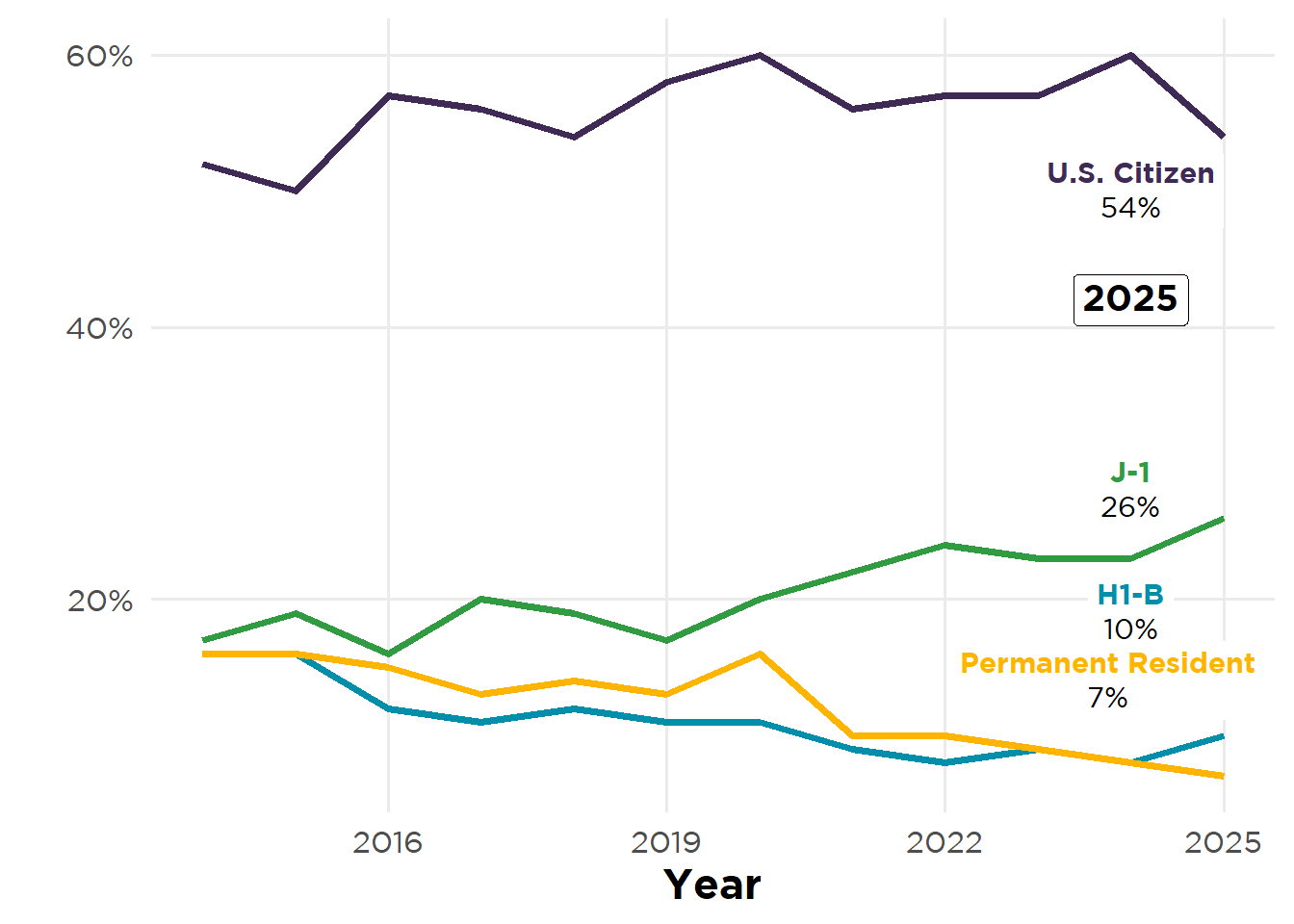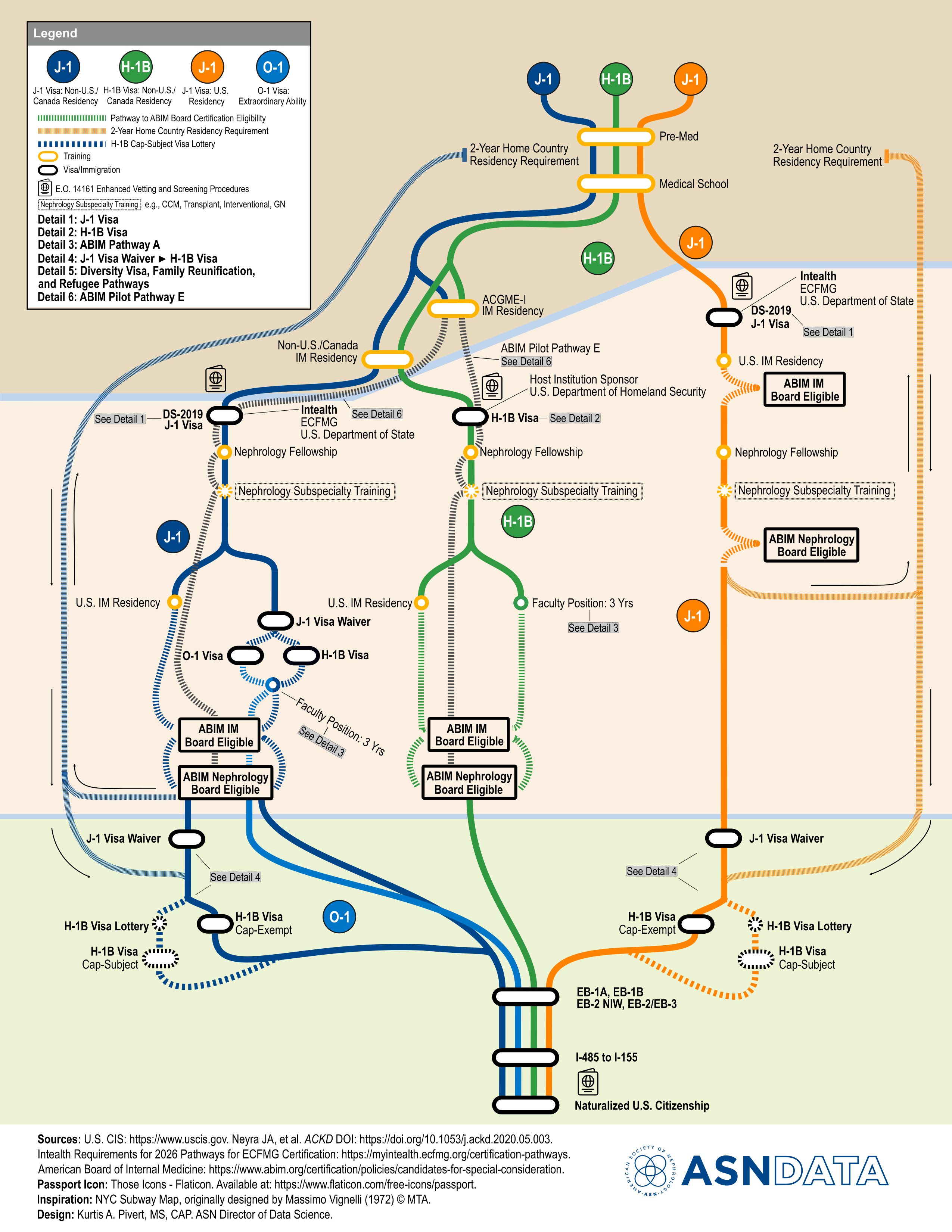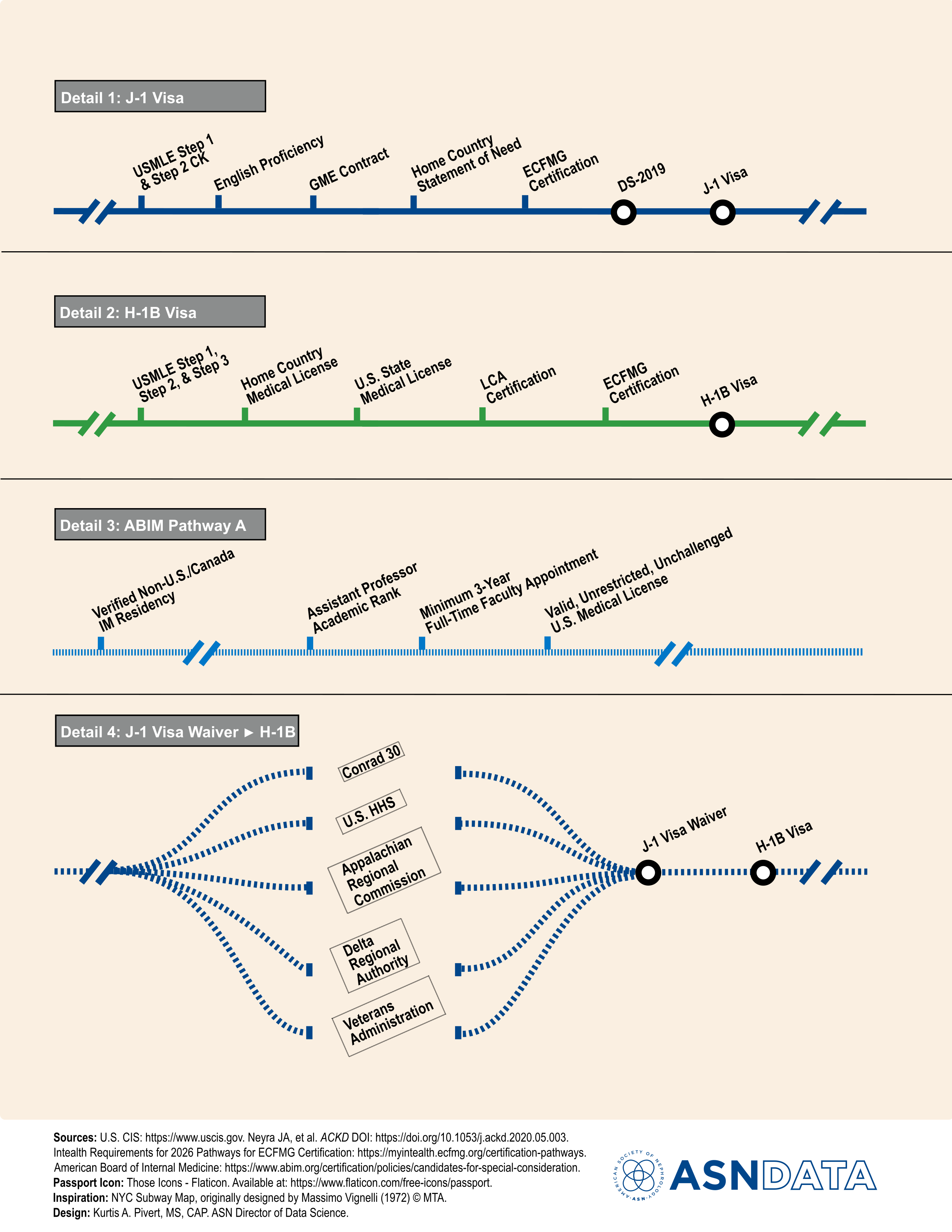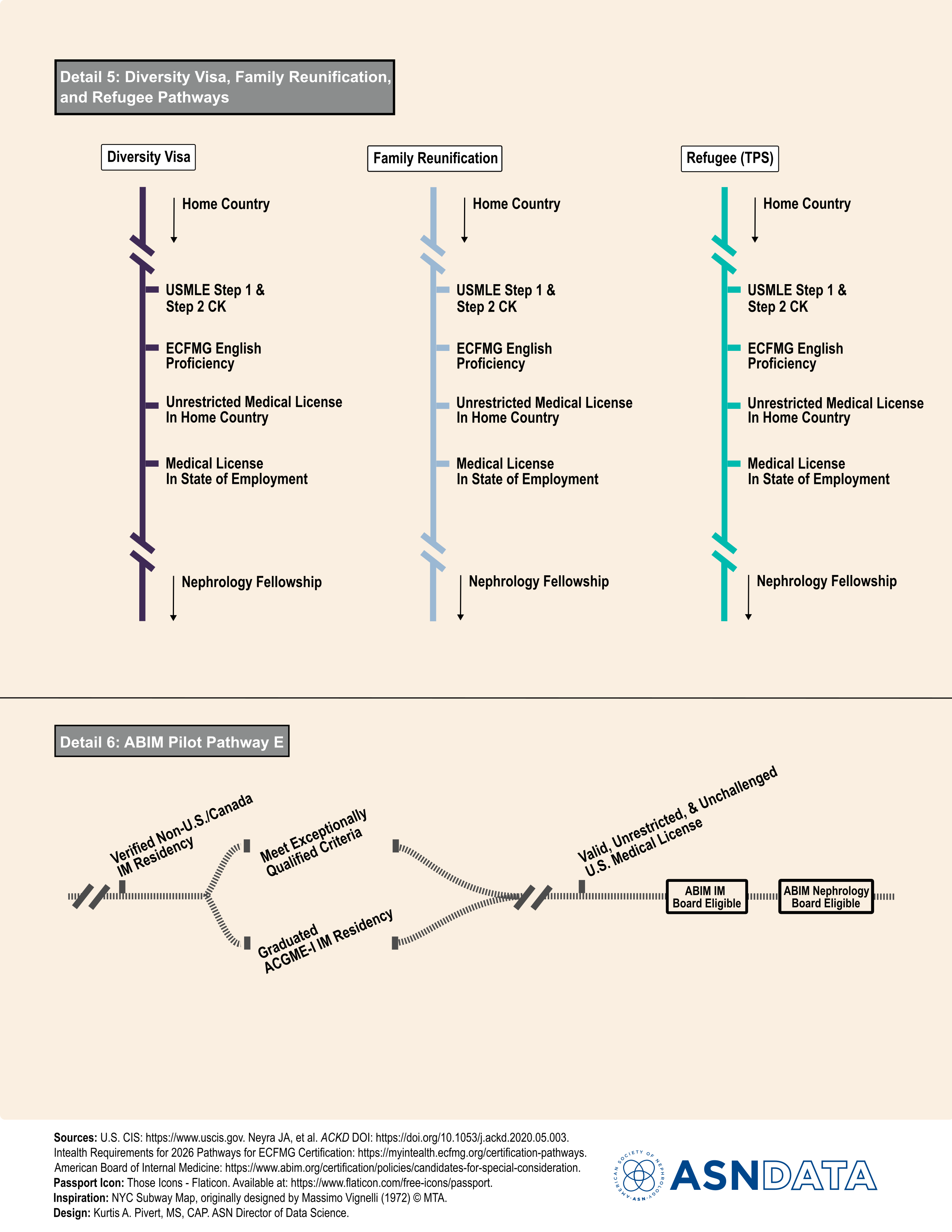Data Detail: IMG Training and Practice Pathways
IMG Nephrologists Navigate Complex Pathways to Train and Practice in the U.S.
International Medical Graduates in the Nephrology Workforce
International medical graduate (IMG) nephrologists play a critical role in providing specialized care for the more than 37 million Americans living with kidney diseases. In 2023, IMGs comprised 25% of physicians and surgeons in the U.S., but accounted for 40% of general internists and 52% of all practicing nephrologists.1 Only geriatric medicine is as reliant on IMG physicians, who make up 52% of their workforce.
In the near term, these trends seem likely to continue, as 40% of internal medicine (IM) residents and 61% of nephrology fellows in 2023 were IMGs.2 Yet potential changes in the duration of status for J-1 visas3 and processing fees for H-1B visas4 could affect the size and composition of the future nephrology workforce. While not comprehensive, data on respondents to ASN’s annual Nephrology Fellow Survey (Pivert et al. 2025) showed that fellows training on visas accounted for one-third of participants in 2025 (Figure 1).
Figure 1: ASN Nephrology Fellow Survey—Respondent Citizenship 2014–2025
Pathways to Train and Practice in the U.S.
To appreciate the complex steps IMG physicians must navigate to train and eventually practice in the U.S., Figures 2, 3, and 4 illustrate the potential pathways they must follow to complete fellowship and become board eligible, including:
Meeting strict criteria for obtaining visas to train and work in the U.S., either a:
J-1 Visa: Sponsored by ECFMG5 and currently valid for duration of training status up to 7 years.
H-1B: A dual-intent work visa valid for a maximum of 6 years.
Clearing enhanced vetting and screening procedures
- Executive Order 14161 instituted enhanced vetting and screening procedures that visa applicants must undergo before approval and entry to the U.S.
Completing a minimum of 13 years of training, including:
Pre-Med and Medical School (typically 8 years).
IM Residency (typically 3 years, but up to 6 years if repeating residency in the U.S. to become board eligible).
Nephrology Fellowship (2 years but can be more depending on training program and track [e.g., research, additional degrees]).
Nephrology Subspecialty Training (1 year).
Becoming eligible for ABIM board certification in both IM and nephrology by completing:
An U.S. IM residency, either solely or repeated after nephrology fellowship.
ABIM Pathway A6
ABIM Pilot Pathway E
Figure 2: IMG Pathways to Train, Practice, and Become Board Eligible
Figure 3: Detail Maps 1–4
Figure 4: Detail Maps 5 and 6
IMG Nephrologists Providing Direct Patient Care
Similar to physicians overall, there is an uneven distribution of nephrologists in the U.S. Ratios of adult nephrologists providing direct patient care per 100,000 population in 2023 ranged from 5.53/100,000 in the District of Columbia to 1.09/100,000 in Alaska (Figure 5 Left). In 42% of states, IMGs comprised the majority of adult nephrologists as seen in Figure 5 Right.
Figure 5: State-Specific Ratio of Nephrologists/100,000 Population (left) and Composition of Nephrology Workforce by Medical School Status (right)
Acknowledgments
Thank you to Dr. Rasheed Balogun (University of Virginia), Dr. Jeffrey S. Berns (University of Pennsylvania), Dr. Suzanne M. Boyle (Temple University), Dr. Eric Holmboe (Intealth), Dr. Javier Neyra (University of Alabama, Birmingham), and Ms. Tracy Wallowicz (Intealth) for their critical review of the IMG pathway illustrations. Interactive figures adapted from Cedric Scherer. Any errors are solely the author’s.
References
Footnotes
Accreditation Council for Graduate Medical Education. Data Resource Book Academic Year 2023–2024. Accreditation Council for Graduate Medical Education: Chicago, IL; ISSN 2473-8670, 2025.↩︎
https://www.asn-online.org/policy/webdocs/ASN_Comments_DHS_DS_ProposedRule_Final.pdf.↩︎
https://www.asn-online.org/policy/webdocs/ASN_H1B_Exemption_Request.pdf.↩︎
https://www.abim.org/certification/policies/candidates-for-special-consideration/.↩︎
Citation
@online{a._pivert2025,
author = {A. Pivert, Kurtis},
title = {Data {Detail:} {IMG} {Training} and {Practice} {Pathways}},
date = {2025-11-14},
url = {https://data.asn-online.org/posts/data_detail_img_pathways/},
doi = {10.70093/d71094798},
langid = {en}
}



